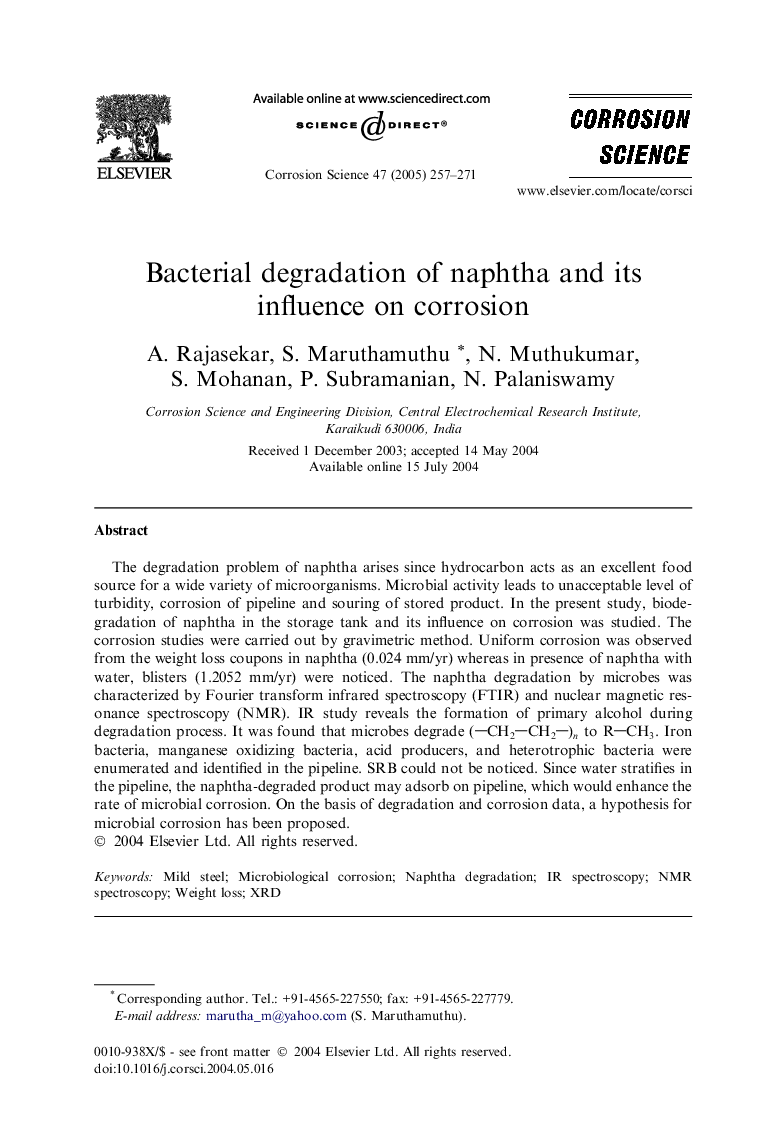| Article ID | Journal | Published Year | Pages | File Type |
|---|---|---|---|---|
| 10628622 | Corrosion Science | 2005 | 15 Pages |
Abstract
The degradation problem of naphtha arises since hydrocarbon acts as an excellent food source for a wide variety of microorganisms. Microbial activity leads to unacceptable level of turbidity, corrosion of pipeline and souring of stored product. In the present study, biodegradation of naphtha in the storage tank and its influence on corrosion was studied. The corrosion studies were carried out by gravimetric method. Uniform corrosion was observed from the weight loss coupons in naphtha (0.024 mm/yr) whereas in presence of naphtha with water, blisters (1.2052 mm/yr) were noticed. The naphtha degradation by microbes was characterized by Fourier transform infrared spectroscopy (FTIR) and nuclear magnetic resonance spectroscopy (NMR). IR study reveals the formation of primary alcohol during degradation process. It was found that microbes degrade (î¸CH2î¸CH2î¸)n to Rî¸CH3. Iron bacteria, manganese oxidizing bacteria, acid producers, and heterotrophic bacteria were enumerated and identified in the pipeline. SRB could not be noticed. Since water stratifies in the pipeline, the naphtha-degraded product may adsorb on pipeline, which would enhance the rate of microbial corrosion. On the basis of degradation and corrosion data, a hypothesis for microbial corrosion has been proposed.
Related Topics
Physical Sciences and Engineering
Materials Science
Ceramics and Composites
Authors
A. Rajasekar, S. Maruthamuthu, N. Muthukumar, S. Mohanan, P. Subramanian, N. Palaniswamy,
